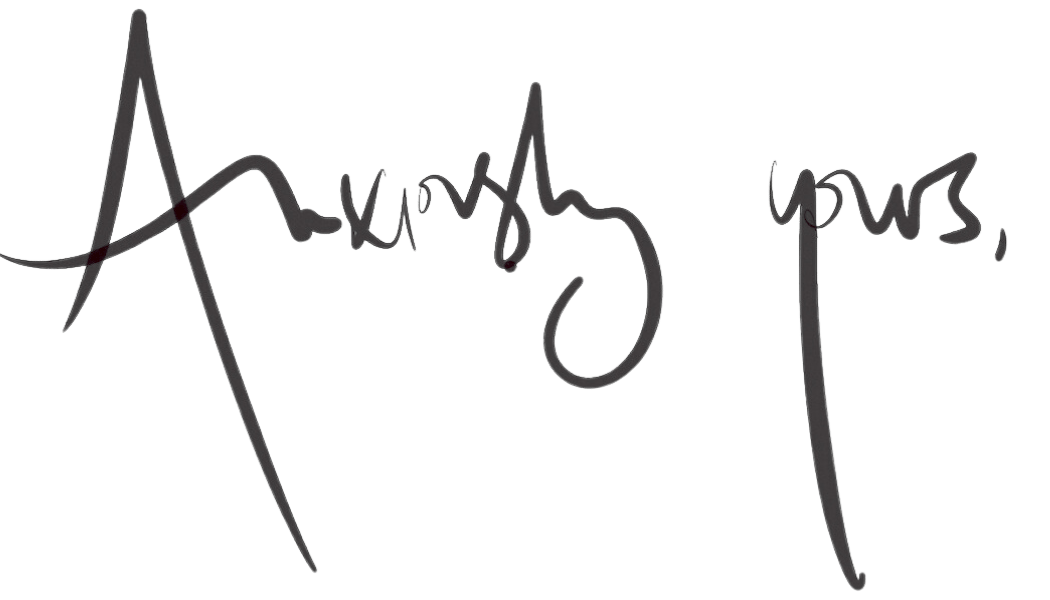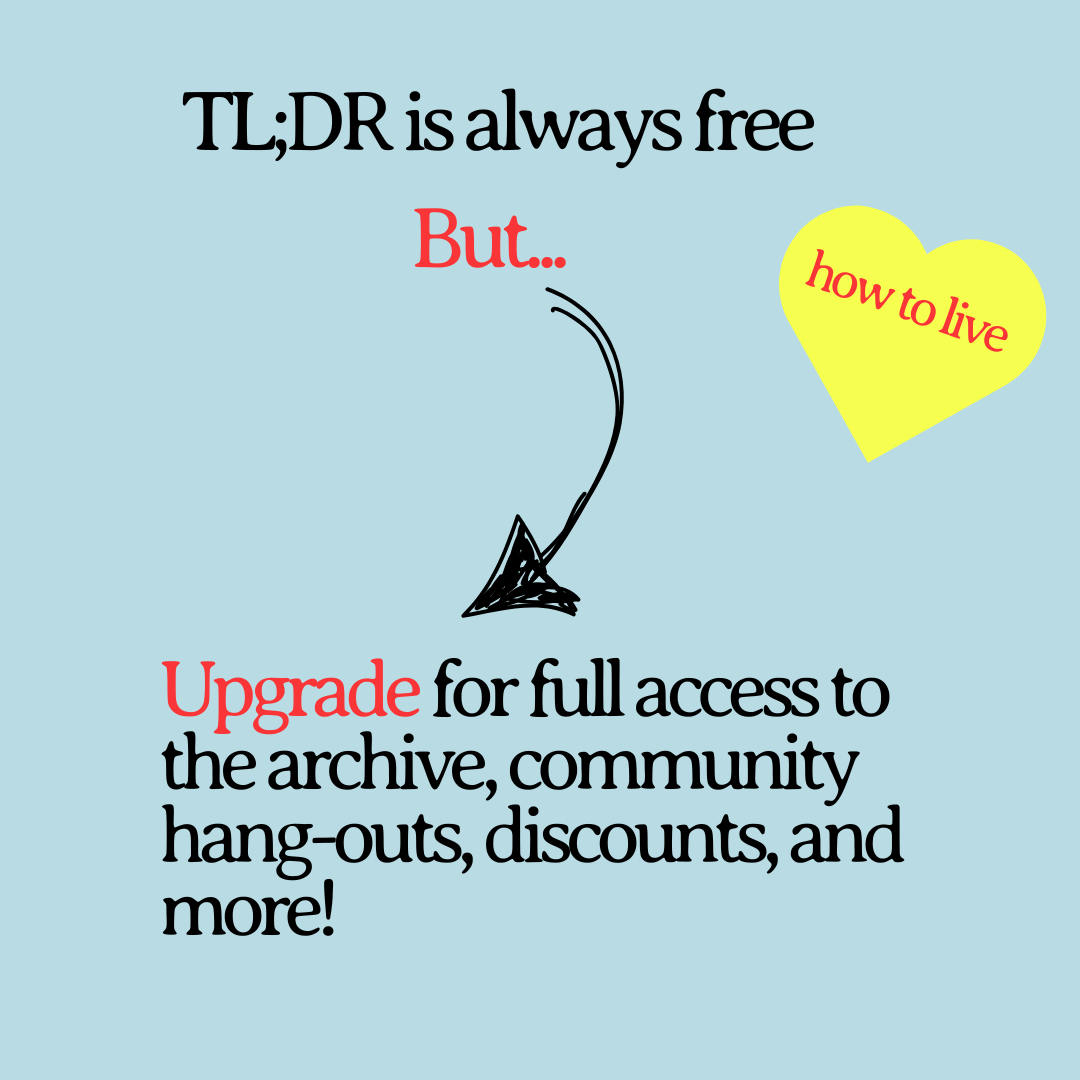TL;DR is a monthly digest summarizing the vital bits from the previous month's How to Live newsletter so you don't miss a thing.
Welcome to The How to Live Newsletter, where we uncover the hidden psychological forces shaping our lives—and holding us back.
Through deep research, personal storytelling, and hard-won insight, I challenge the myth of normalcy and offer new ways to face old struggles.
This newsletter is reader-supported—if it resonates, please consider a paid subscription for deeper insights, exclusive content, community, and an ad-free experience. ❤️
You can also donate any amount.
On March 5th, 2025, I Wrote About Limerence—The State of Obsessive Yearning Many Mistakenly Call Love.
The experimental psychologist Dorothy Tennov writes in her 1979 book Love and Limerence: The Experience of Being in Love of the moment she began to take an interest in the systematic study of romantic love.
It was a fall afternoon in the mid-1960s when Dr. Tennov walked into her office from class to discover her student, Marilyn Weber, waiting for her. Ms. Weber was particularly impressive and bright, but her posture was sloped that day, and her eyes were time-stamped red, marking hours of crying.
She'd come to apologize for having failed to hand in an assignment and vowed to get it done within a week.
Without detailing her distress, Ms. Weber said she couldn't pull herself together and wasn't sure why she was behaving the way she was but wondered aloud whether life was just too hard for her.
Dr. Tennov flashed to a conversation about romantic love she'd had with two graduate students a few weeks earlier. Both students described the pain of past breakups and how it rendered them utterly useless.
The emotions they expressed were ones Dr. Tennov had experienced, and she wondered if there was a universally shared progression to the stages of romantic love.
As Ms. Weber headed out the door, Dr. Tennov couldn't help but ask whether her distress had "anything to do with a disappointment with love?"
Indeed, it had.
Dr. Tennov was curious about this distress caused by love that Ms. Weber was experiencing—her students had been describing something similar.
She turned to her textbooks, journals, psychology papers, and other writings on romantic love but found nothing about the agonizing pain of loving another.
WHAT IS THIS STATE CALLED?
The question gripped her until she decided to conduct the research herself.
Guided by the notion that this specific love-distress was not a pathological state, nor an aspect of neurotic personality (based on the psychological states of students who were known to her), she concluded that the pain from love must be a regular, universal experience.
On March 9, I Invited You on a Private Walking Tour of Malta in 84 Photos.
As I’ve mentioned, I’m in Malta for a month. A month that is quickly closing in on me. Today, for my beloved paid members, I am taking you on a private walking tour through Malta, a place many can’t even identify on a map. (Find Sicily, then look below a few inches.)
The first week and a half, I stayed in Rabat. A sweet part of Malta, where the sidewalks are Scotch Tape narrow. Busy had to walk either in front or behind me.
The doors in Malta are a wonder, and so are the closed balconies, called Gallarija (plural: Gallariji).



On March 12, I Wrote About Necessary Questions: 7 Inquiries That Reveal the Hidden Self.
It’s not that I’m so smart, but I stay with the questions much longer.
The other night, I took Busy out for her last walk before bed—late, past midnight, in Birgu, Malta, a town dating back to the 3rd century. It’s quiet, safe, the kind of place where restaurants leave tables outside overnight without worry. Yet, I have lifelong anxiety. And I am alone in a stranger’s three-story house, in a secluded part of a secluded country.
So, naturally, stepping onto a dark, deserted street should have scared the hell out of me.
But it didn’t.
Instead, I felt entirely, utterly unafraid.
That absence of fear—the mythical ease an anxious person longs for—was so tangible it startled me. And in that space, I realized that fear is just a thought.
This, of course, is not new information, but like most things that catapult you forward, it struck me in a new way—I could feel this truth instead of intellectualizing it. Maybe because the thought occurred when I felt safe in a situation, I’d typically feel afraid.
I asked myself: What if it could always be this easy to feel unafraid when I am already safe?
Anxiety makes us fear our own thoughts more than actual danger. And sometimes, all it takes is the right question to shift our perspective.
So, I started wondering: What other questions, answered honestly, might help close the gap between the person we are right now and the person we want to become?
Here are seven I came up with…
There is no normal life that is free of pain. It's the very wrestling with our problems that can be the impetus for our growth.
No one is free from mental anguish—not nuns or princes, healers or sherpas, and not even psychologists.
Below, 5 psychologists talk openly and honestly about their struggles and how what connects us is not only our joys but our sorrows.
That none of us is truly alone.
On March 19, 2025, I Wrote About the Indecipherable Voynich Manuscript and Why We Need What We Can’t Understand.
In the library at Yale University, there is a book no one knows how to read.
It sits behind glass, dates to the early 15th century, written in an alphabet that appears nowhere else on Earth. For six centuries, not a single human being has been able to decipher a word of it.
No one knows if it contains prophecies, spiritual revelations, or scientific secrets, whether it's the world's most elaborate medieval prank or a more contemporary hoax perpetrated by the man who claimed to find this remarkable Codex.
Welcome to the maddening puzzle of the Voynich Manuscript.
Imagine spending your entire professional career—decades of specialized training in linguistics, cryptography, or medieval history—only to be thoroughly defeated by the work of an unknown scribe who's been dead for half a millennium.
This is precisely what's happened to generations of the world's brightest minds.
NSA cryptographers who cracked wartime military codes?
Stumped.
Linguists who can decipher ancient forgotten languages?
Baffled.
AI systems that can beat grandmasters at chess and Go?
Useless.
This perplexing manuscript, written on 240 vellum pages, contains illustrations of unidentifiable herbs and botanicals—the plants here resemble nature on an ayahuasca retreat.
What makes this centuries-old puzzle so infuriating isn't just that we can't read it—it's that it looks like we should be able to.
But you don't need to examine the illustrations long to see that the plants don't exist, wired as they are with impossible root structures and leaf arrangements.
On March 26, 2025, I Wrote About the Vigilant Heart: Hypervigilance and Emotional Exhaustion
Your brain takes the shape of what your mind rests upon
I spent my entire childhood orbiting my mother on a hypervigilant 24-hour watch, ensuring she wouldn’t disappear into thin air, accidentally cross the street on red and get hit by a car, or forget she had a family and move to another country while we were sleeping.
This is why I slept in her bedroom for years—well past an appropriate age— jarred awake by the slightest rustle of a bedsheet. I am anxiously attached in the language of attachment theory, which states that the care given to babies by their primary caregiver influences how they’ll attach to their relationships as adults.
Not long after I was born, my parents separated and then divorced.
Perhaps that’s why connecting with people I love is intertwined with the threat of imminent loss. Who knows? Whatever the case, something triggered my genetic predisposition for anxiety, and it flourished under the guidance of hypervigilance.
Hypervigilance itself is not a mental health condition. Instead, it’s a symptom associated with various mental health disorders, including PTSD, panic disorder, generalized anxiety disorder, and mood disorders.
To be hypervigilant means to be on high alert and prone to overreaction.
It is being primed for danger, ready to run or hide immediately, even while sitting at dinner with friends and loved ones.
Why do some people operate in hypervigilance while others operate at the other extreme—excessive self-reliance and independence?
Thanks so much for reading The How to Live Newsletter! This enormous project is born from love and sustained by readers like you. If you find value here and want this work to continue, please consider becoming a paid member or a donor.
Until next week, I will remain…

Amanda
P.S. Thank you for reading! This newsletter is my passion and livelihood; it thrives because of readers like you. If you've found solace, wisdom or insight here, please consider upgrading, and if you think a friend or family member could benefit, please feel free to share. Every bit helps, and I’m deeply grateful for your support. 💙
Quick note: Nope, I’m not a therapist—just someone who spent 25 years with undiagnosed panic disorder and 23 years in therapy. How to Live distills what I’ve learned through lived experience, therapy, and obsessive research—so you can skip the unnecessary suffering and better understand yourself.
Some links are affiliate links, meaning I earn a small commission at no extra cost to you. Every bit goes straight back into supporting this newsletter. Thank you!













 Upgrade
Upgrade